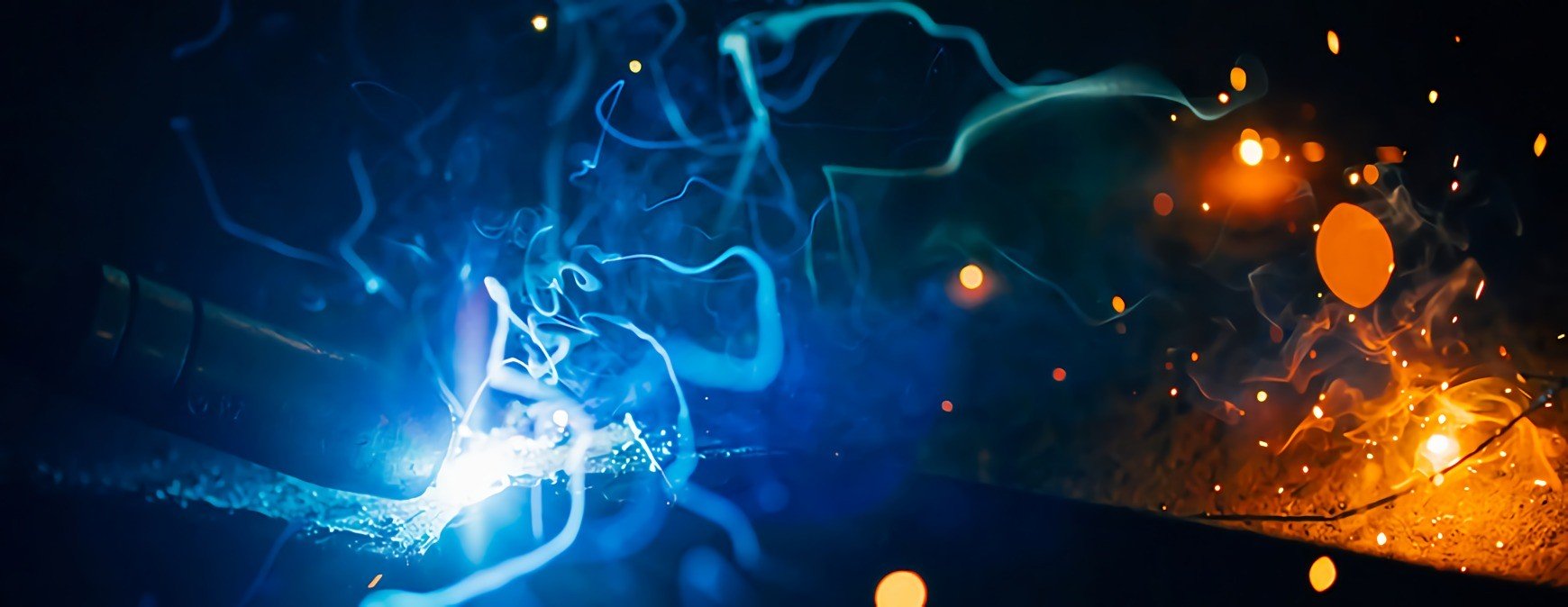
Welding is a hands-on job, but welders still have to have a fair amount of technical knowledge. One of the terms you will hear in class and in the shop a lot is “welding current.” You will see that welding machines and electrodes are labeled AC or DC, which describe the polarity of the welding machine’s current. Why do electrical currents and polarity matter in welding? Let’s take a closer look.
What is polarity in welding?
The electrical circuit that is created when you turn on the welder has a negative and a positive pole – this property is called polarity. Polarity matters greatly in welding because choosing the right polarity affects the strength and quality of the weld. Using the wrong polarity will lead to lots of spatter, bad penetration, and a lack of control of your welding arc. 1
What is straight and reverse polarity in welding?
“Straight” and “reverse” polarity are common terms for “electrode-negative” and “electrode-positive” polarity. Welding currents with electrode-positive (reverse) polarity result in deeper penetration, while electrode-negative (straight) polarity has the benefit of faster melt-off and faster deposition rate. Different shielding gases may further affect the weld as well. 2
What do AC and DC current mean?
AC stands for “alternating current” and DC stands for “direct current”. The former alternates the direction of its flow, while the latter flows in only one direction. Therefore, welding machines and electrodes labeled “DC” have constant polarity, whereas those labeled “AC” change polarity 120 times per second with a 60-hertz current.
How do AC and DC currents differ in welding?
In shielded metal arc welding (SMAW), DC is widely used because of its many benefits. Welding with DC creates smoother and more stable arcs, you can strike the arc more easily, there are fewer arc outages and less spatter, and vertical up and overhead welding is also less complicated. However, AC can be the preferred choice of beginners like welding training students, as it is frequently used with low-cost, entry-level welding machines. AC is also common in shipbuilding welding or in any conditions where the arc may blow from side to side. 3
Have You Considered a Career in the Skilled Trades?
Fill out the form to recieve a no obligation info packet.
What is DC positive and DC negative polarity in welding?
Furthermore, there is a difference in welding not only with regard to the welding current, but also whether the current has electrode-positive or electrode-negative polarity. DC positive polarity allows for a high level of penetration into the steel, while DC negative polarity means less penetration but a higher deposition rate (used on thin sheet metal, for instance). Since AC is half positive and half negative, its welding properties are right in the middle of DC positive and DC negative polarity. Some welders choose AC if they want to avoid deep penetration, such as in repair work on rusty metals.
Understanding welding currents and polarity is important for completing a welding job correctly. You want to consider the type of metal, welding conditions, penetration levels, and deposition rate when choosing AC or DC currents and electrode-positive or electrode-negative polarity. Knowing how these factors impact your weld will make your job easier.
Additional Sources
1 – http://redwingsteelworks.com/articles/whats-difference-reverse-straight-polarity/
2 – http://www.lincolnelectric.com/en-us/support/process-and-theory/Pages/understanding-polarity-detail.aspx
3 – http://weldingproductivity.com/article/ac-vs-dc/
This blog has been labeled as archived as it may no longer contain the most up-to-date data. For a list of all current blog posts, please visit our blog homepage at https://www.tws.edu/blog/







